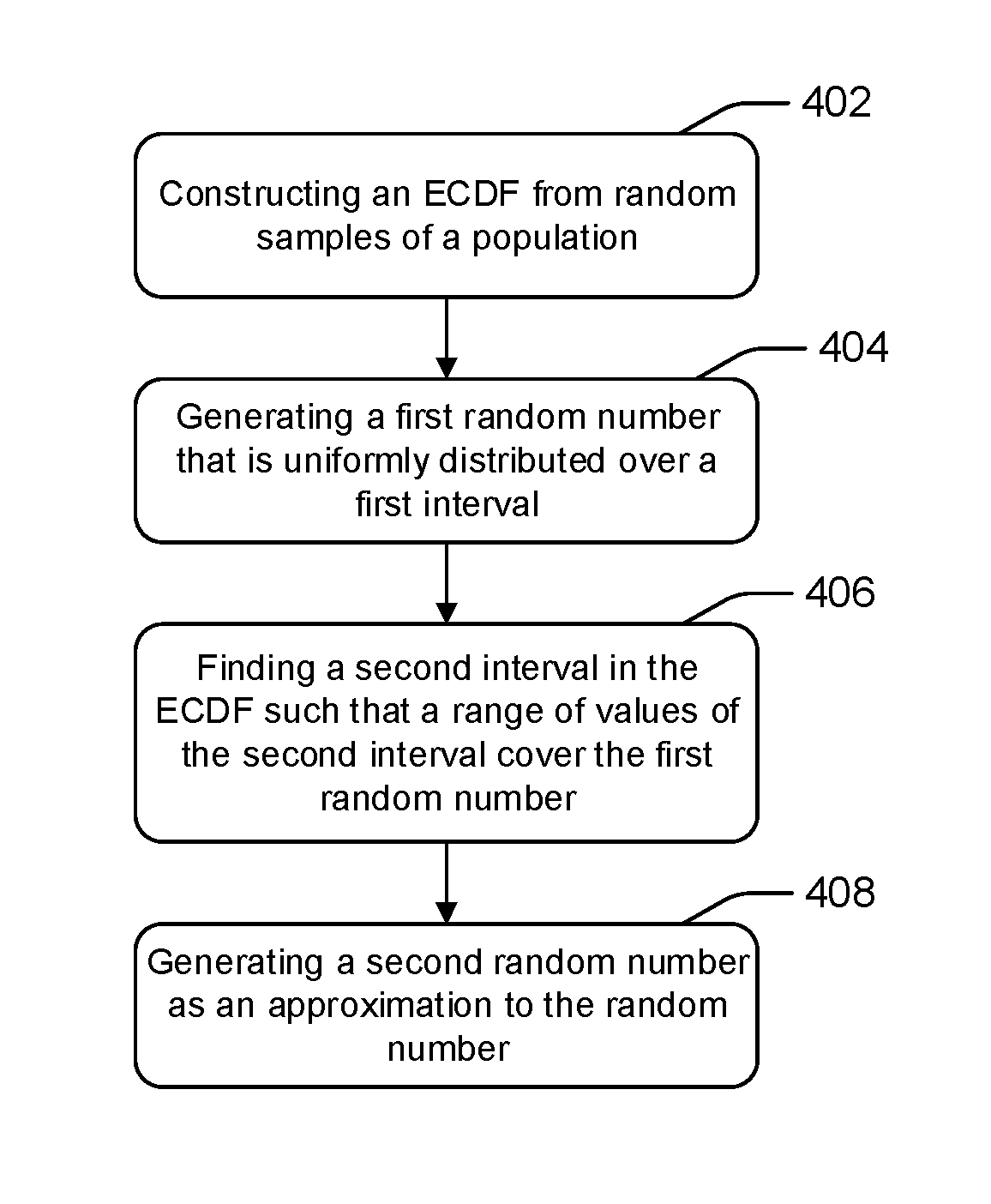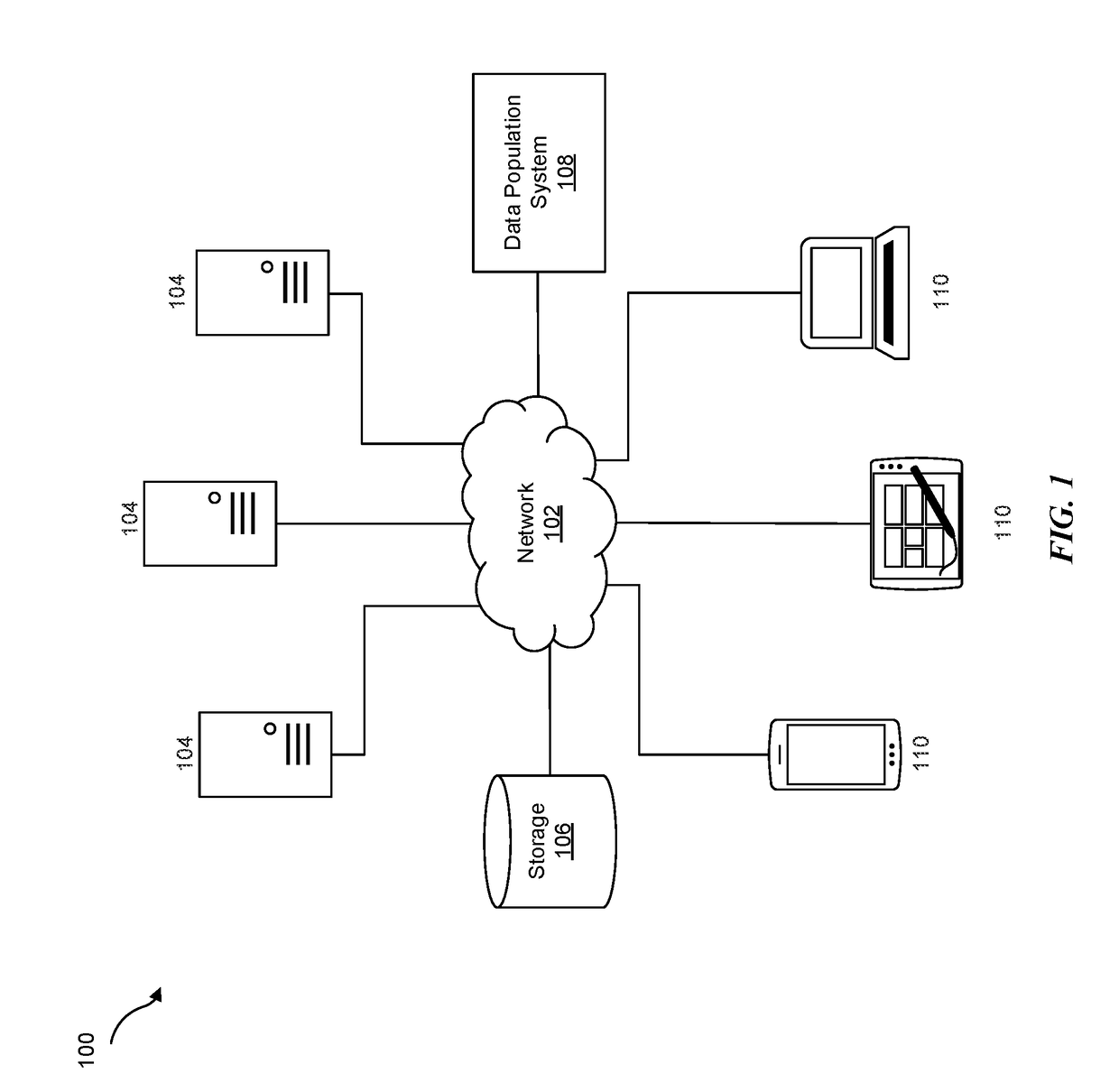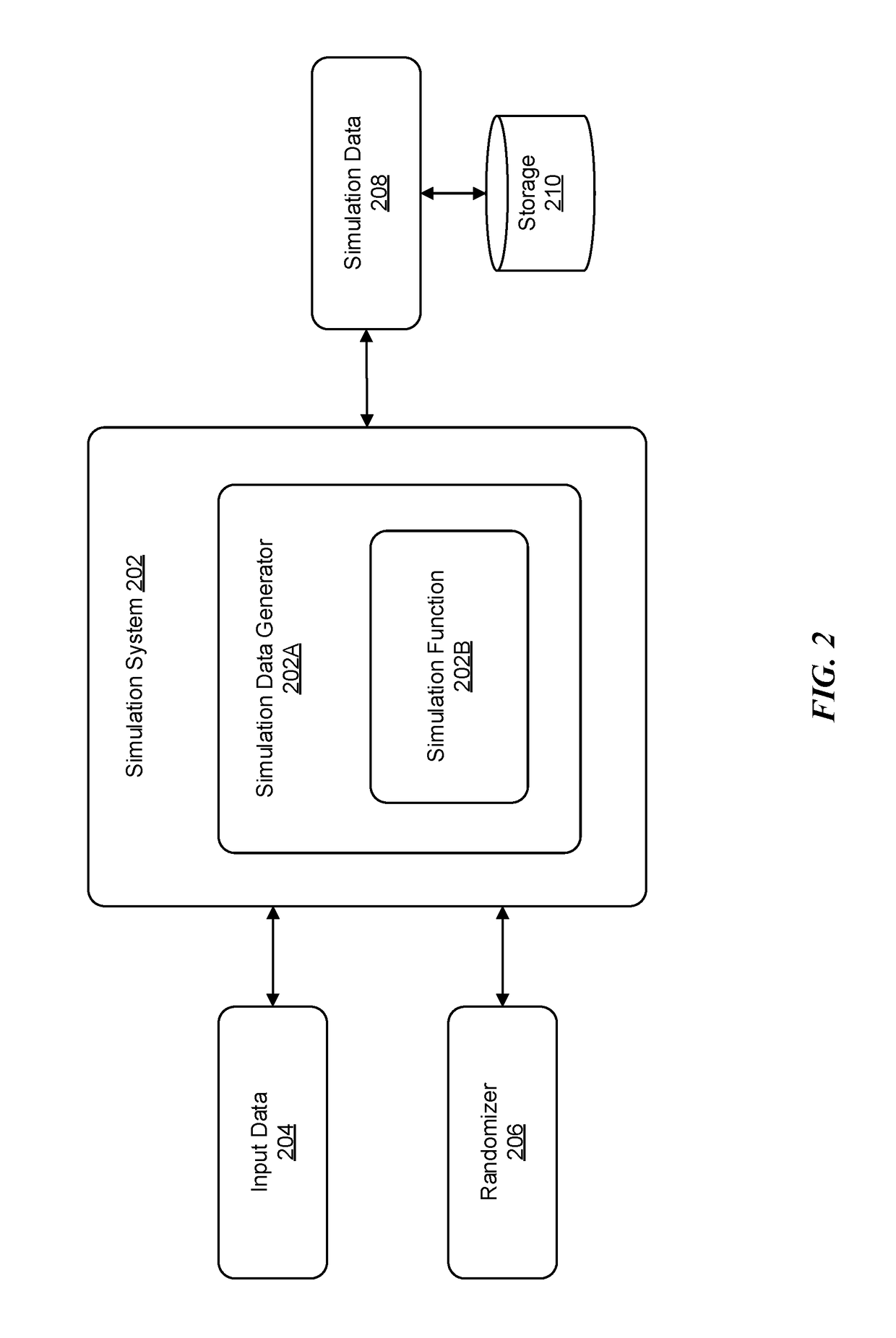Approximate random number generator by empirical cumulative distribution function
a random number generator and cumulative distribution technology, applied in the field of approximate random number generators by empirical cumulative distribution functions, can solve the problems of not always accessible for testing purposes, exponential increase in data size, and exponential addition to at least the complexity of relationships
- Summary
- Abstract
- Description
- Claims
- Application Information
AI Technical Summary
Benefits of technology
Problems solved by technology
Method used
Image
Examples
Embodiment Construction
[0023]The disclosure relates to technology for generating random numbers that are distributed by a population distribution.
[0024]In statistics, traditional resampling methods such as bootstrapping or jackknifing, allow for the estimation of the precision of sample statistics (e.g., medians, variances, percentiles) using subsets of data or by drawing randomly with replacement from a set of data points. In such instances, no new sample points are generated. That is, only data points from otherwise available data may be sampled. Thus, data that is unavailable may not be used as part of the resampling methodology.
[0025]According to embodiments of the disclosure, the proposed methodology provides for the generation of random numbers that are characteristic of data points (samples) in the data that would otherwise not be available for consumption. That is, new random numbers may be generated that are not part of the set of observations. For example, assume a set of data that includes priv...
PUM
 Login to View More
Login to View More Abstract
Description
Claims
Application Information
 Login to View More
Login to View More - R&D
- Intellectual Property
- Life Sciences
- Materials
- Tech Scout
- Unparalleled Data Quality
- Higher Quality Content
- 60% Fewer Hallucinations
Browse by: Latest US Patents, China's latest patents, Technical Efficacy Thesaurus, Application Domain, Technology Topic, Popular Technical Reports.
© 2025 PatSnap. All rights reserved.Legal|Privacy policy|Modern Slavery Act Transparency Statement|Sitemap|About US| Contact US: help@patsnap.com



